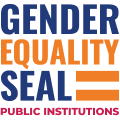
Planning and management for gender equality
Public policies must integrate gender equality objectives, aligned with national planning frameworks and equality policies and the UN 2030 Agenda.
An in-depth analysis of national policies, plans and programmes is needed to understand and redress gender inequalities. To achieve this, institutions must have sex-disaggregated data, mechanisms to ensure gender analysis as part of designing and managing public policies, specific gender equality targets and indicators, and a sufficient budget.

Gender equality architecture and capacities
Institutions must have adequate capacities for integrating a gender perspective in their planning and programming in a meaningful way. This is best achieved through the establishment of dedicated Gender units or departments, with expert human resources, budgets that are allocated strategically and a direct connection with senior management.
Strategic capacity building actions are also needed to steadily build officials’ capacities across the institution to ensure effective gender integration.

Work environments to enable gender equality
Gender-responsive institutions show zero tolerance towards sexist and discriminatory behaviour and treat staff with fairness regarding remuneration, work benefits and their possibilities to progress within the organization.
Work-life balance should be actively promoted, including fostering co-responsibility between men and women for unpaid domestic and care work.
The workplace must have zero tolerance for sexual and other forms of harassment, ensured through adequate policies and protocols and systematic awareness-raising.

Participation partnerships, and accountability
Building strategic alliances is key for advancing gender equality. Public institutions should engage with other public institutions, private organizations and other partners to help close gender gaps and address underlining structural barriers.
Public institutions should establish strong dialogues and accountability systems with women’s and feminist groups and movements.
Public institutions must be accountable to their citizens, ensuring fair, respectful and non-discriminatory treatment of the people they serve.

Results and impact of public policies
Based on the country and institutional contexts, institutions must be able to show evidence of their positive contributions to gender equality in the framework of the 2030 Agenda. This can be done through external assessments, institutional contribution to human rights and gender equality international reports such as CEDAW, EPA, SDGs or others.
These outcomes must demonstrate improvements in services that target gender equality and changes in gender relations, families, communities and the social environment.





